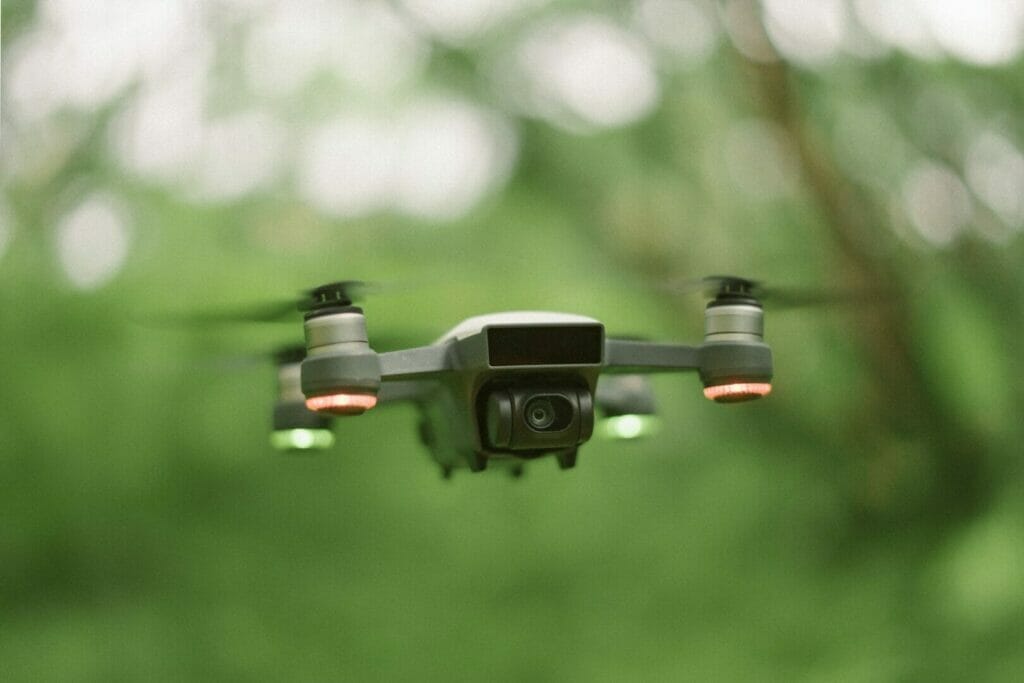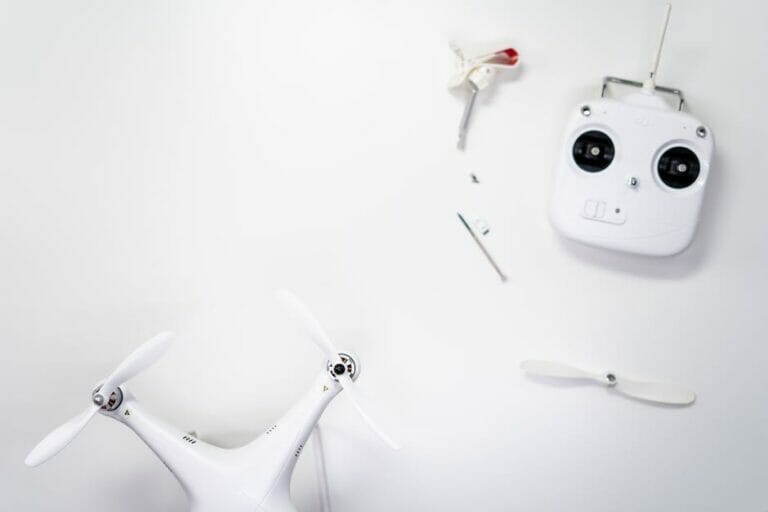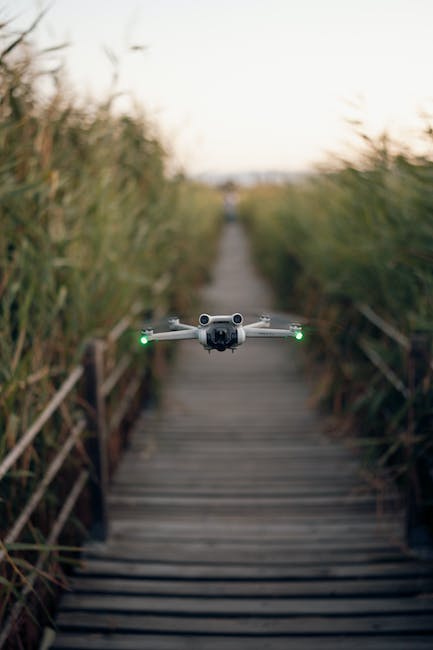Flying High: What You Need to Know About Drone Laws in Estonia
In recent years, the popularity of drones has been on the rise in Estonia. These unmanned aerial vehicles (UAVs) have become increasingly accessible and affordable, leading to a surge in their use for various purposes. From aerial photography and videography to agricultural surveys and search and rescue operations, drones have proven to be versatile tools with a wide range of applications.
However, with the increasing number of drones in the sky, it is crucial for drone operators to understand and adhere to the regulations set forth by the Estonian government. These regulations are in place to ensure the safe and responsible operation of drones, as well as to protect the privacy and security of individuals and property.
In this post, we will be covering Drone Laws in Estonia in detail.
Quick Tip: Discover how to obtain your EU Drone License quickly and effortlessly with Drone Class’s expert guidance. 📜🤝 Say goodbye to the hassles of navigating the bureaucratic maze and say hello to flying high in Spain legally and confidently! 🌄🚀
Understanding the Different Types of Drones

There are various types of drones available in the market, each with its own features and capabilities. The most common types of drones include:
1. Consumer Drones: These are the drones that are most commonly used by hobbyists and enthusiasts. They are typically small and lightweight, equipped with a camera for aerial photography and videography. Consumer drones are easy to fly and are often equipped with features such as GPS navigation and obstacle avoidance.
2. Professional Drones: These drones are designed for commercial use and are typically larger and more powerful than consumer drones. They are often used for aerial inspections, surveying, and mapping. Professional drones are equipped with high-quality cameras and advanced sensors for precise data collection.
3. Racing Drones: Racing drones are specifically designed for high-speed racing competitions. They are lightweight and agile, capable of reaching speeds of up to 100 miles per hour. Racing drones are equipped with first-person view (FPV) systems that allow the pilot to see the drone’s perspective in real-time.
4. Military Drones: Military drones, also known as unmanned combat aerial vehicles (UCAVs), are used by the military for reconnaissance, surveillance, and combat operations. These drones are equipped with advanced weapons systems and are capable of carrying out missions without risking human lives.
The Legal Framework for Flying Drones in Estonia
In Estonia, the operation of drones is regulated by the Estonian Civil Aviation Administration (ECAA). The ECAA is responsible for ensuring the safe and efficient operation of civil aviation in Estonia, including the regulation of drones.
The legal framework for drone flying in Estonia is based on the European Union Aviation Safety Agency (EASA) regulations. These regulations provide a standardized set of rules for drone operations across the European Union.
Under Estonian law, drones are classified into different categories based on their weight and capabilities. The regulations for each category vary, with stricter rules for larger and more capable drones.
The Role of the Estonian Civil Aviation Administration in Drone Regulation
The Estonian Civil Aviation Administration plays a crucial role in regulating drone flying in Estonia. The administration is responsible for issuing permits and licenses for drone operations, as well as enforcing the regulations set forth by the EASA.
The ECAA provides a range of services to drone operators, including the registration of drones, certification of drone pilots, and the issuance of permits for specific drone operations. The administration also conducts inspections and investigations to ensure compliance with the regulations.
Additionally, the ECAA works closely with other government agencies, such as the Estonian Police and Border Guard Board, to enforce drone regulations and address any safety or security concerns.
Requirements for Registering Your Drone in Estonia
In Estonia, all drones weighing more than 250 grams must be registered with the Estonian Civil Aviation Administration. To register your drone, you will need to provide the following information:
1. Personal Information: You will need to provide your full name, address, and contact information.
2. Drone Information: You will need to provide the make, model, and serial number of your drone, as well as its weight and dimensions.
3. Proof of Ownership: You will need to provide proof of ownership, such as a purchase receipt or a certificate of registration.
Once you have gathered all the necessary information, you can submit your registration application online through the ECAA’s website. After your application is processed, you will receive a registration certificate that must be carried with you whenever you fly your drone.
Drone Pilot Certification: What You Need to Know
In addition to registering your drone, you may also need to obtain a drone pilot certificate depending on the category of your drone and the type of operation you plan to conduct.
There are three levels of drone pilot certification in Estonia:
1. Open Category: This category is for drones weighing less than 25 kilograms and flying in areas with low risk to people on the ground. To obtain an open-category certificate, you must pass an online knowledge test and complete an online training course.
2. Specific Category: This category is for drones weighing more than 25 kilograms or flying in areas with higher risk to people on the ground. To obtain a specific category certificate, you must pass a theoretical knowledge test and a practical flight assessment.
3. Certified Category: This category is for drones engaged in complex operations, such as aerial work or beyond visual line of sight (BVLOS) operations. To obtain a certified category certificate, you must undergo a more rigorous training program and pass both theoretical and practical exams.
Quick Tip: Discover how to obtain your EU Drone License quickly and effortlessly with Drone Class’s expert guidance. 📜🤝 Say goodbye to the hassles of navigating the bureaucratic maze and say hello to flying high in Spain legally and confidently! 🌄🚀
Restrictions on Flying Drones in Estonia
There are several restrictions on drone flying in Estonia to ensure the safety and privacy of individuals and property. Some of the key restrictions include:
1. No-Fly Zones: Drones are prohibited from flying in certain areas, such as airports, military installations, and national parks. These no-fly zones are designated to prevent interference with manned aircraft and to protect sensitive areas.
2. Restricted Areas: Drones are also restricted from flying in certain areas where there may be a risk to public safety or national security. These restricted areas include government buildings, prisons, and critical infrastructure.
3. Altitude Restrictions: Drones are generally not allowed to fly higher than 120 meters above ground level unless special permission is obtained from the Estonian Civil Aviation Administration.
4. Privacy and Data Protection: Drone operators must respect the privacy of individuals and comply with data protection laws. It is illegal to use drones for surveillance or to capture images or videos of individuals without their consent.
Penalties for Violating Drone Regulations in Estonia
Violating drone regulations in Estonia can result in fines and other consequences. The penalties for drone-related offences vary depending on the severity of the violation.
For minor offenses, such as flying in a restricted area without permission, the fine can range from 200 to 400 euros. For more serious offenses, such as endangering public safety or violating privacy rights, the fine can be as high as 32,000 euros.
In addition to fines, drone operators may also face other consequences, such as the confiscation of their drone or the suspension of their drone pilot certificate. Repeat offenders may be subject to criminal charges and imprisonment.
Best Practices for Safe and Responsible Drone Flying
To ensure the safe and responsible operation of drones in Estonia, it is important for drone operators to follow best practices. Some of the key safety measures and precautions include:
1. Pre-Flight Checks: Before each flight, conduct a thorough pre-flight check to ensure that your drone is in good working condition. Check the battery level, propellers, and other components for any signs of damage or wear.
2. Fly in Open Areas: Whenever possible, fly your drone in open areas away from people, buildings, and other obstacles. This will reduce the risk of collisions and minimize the impact of any potential accidents.
3. Maintain Visual Line of Sight: Always keep your drone within your visual line of sight during flight. This will allow you to maintain control of your drone and avoid any potential hazards.
4. Respect Privacy and Property Rights: Do not fly your drone over private property without the owner’s permission. Respect the privacy of individuals and avoid capturing images or videos of people without their consent.
Future Developments in Drone Regulation in Estonia
The Estonian government is actively working on initiatives and programs to improve drone safety and regulation. Some of the future developments in drone regulation in Estonia include:
1. Remote Identification: The Estonian Civil Aviation Administration is exploring the implementation of remote identification systems for drones. This will enable authorities to identify and track drones in real-time, enhancing safety and security.
2. Traffic Management Systems: The government is also working on the development of traffic management systems for drones. These systems will enable the safe integration of drones into the airspace, allowing for more complex operations and increased efficiency.
3. Public Awareness Campaigns: The Estonian government is planning to launch public awareness campaigns to educate drone operators and the general public about drone regulations and best practices. These campaigns will aim to promote safe and responsible drone flying.
Conclusion: Drone Laws in Estonia
In conclusion, understanding flying drone in Estonia is crucial for safe and responsible drone flying. The rise of drones in Estonia has led to the need for a legal framework to ensure the safe operation of these unmanned aerial vehicles. The Estonian Civil Aviation Administration plays a vital role in regulating drone flying and provides a range of services to drone operators.
To fly a drone in Estonia, you must register your drone and, depending on the category and type of operation, obtain a drone pilot certificate. There are also restrictions on drone flying, such as no-fly zones and altitude restrictions, to protect public safety and privacy.
By following best practices for safe and responsible drone flying, drone operators can help ensure the continued growth and positive impact of drones in Estonia. It is important to stay informed about future developments in drone regulation and to actively participate in initiatives aimed at improving drone safety and regulation.










